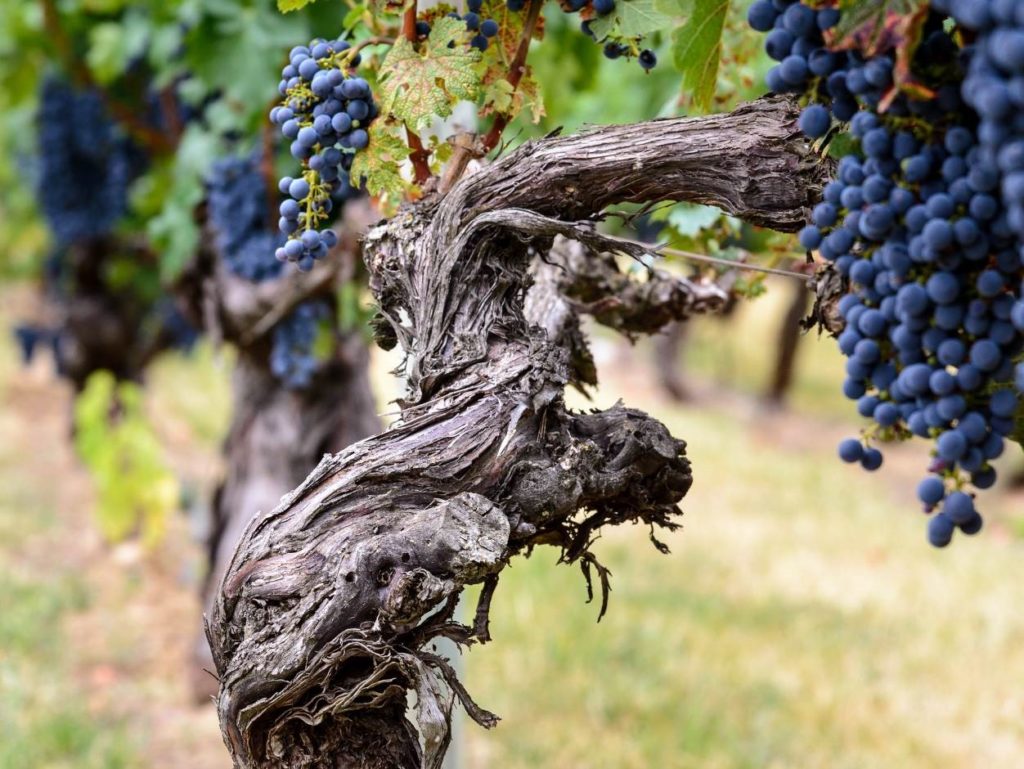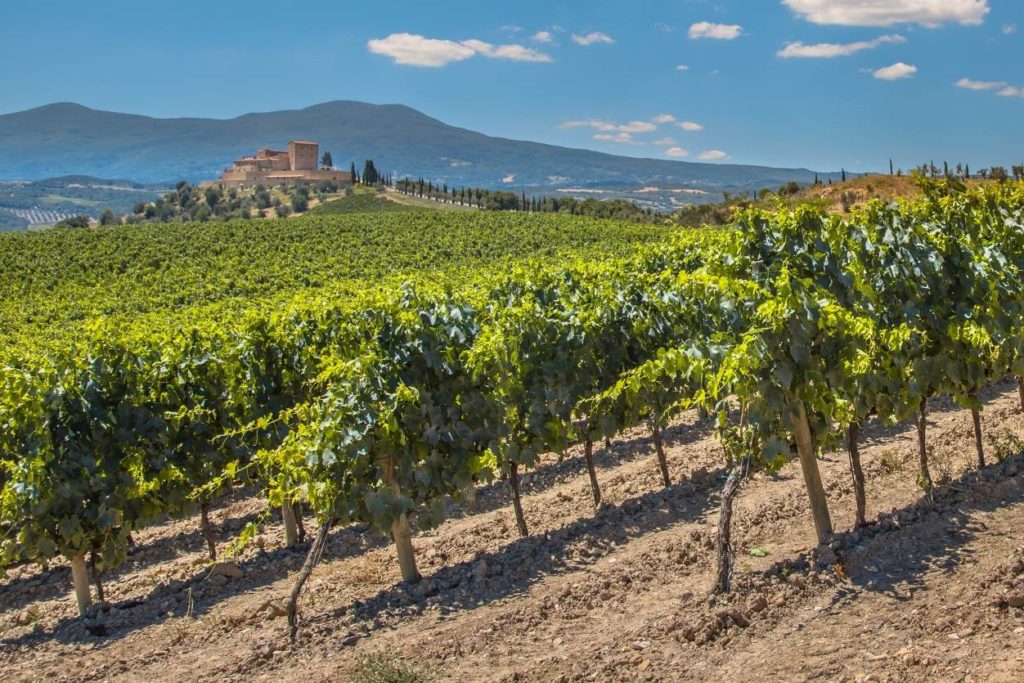
An insight into Spanish wine regions: Rioja

La Rioja is Spain’s most iconic vineyard and has maintained its global popularity, despite rising competition from Bierzo, Ribera del Duero, and Priorat. The Spanish wine region offers an enticing package of beautiful countryside, fascinating history, and delectable rosé, white and red wine. It is one of only two Spanish wine regions awarded with DOCa title – the other is Priorat. In this corner of Spain, there is an abundance of innovation and experimentation alongside unaltered traditional wine production – the Rioja wine region will not diminish any time soon
Rioja’s reputation was forged in the late 19th century, when Bordeaux merchants arrived in search of new wine stocks. Unfortunately, Phylloxera, a vine pest that decimated vines globally in the 1800s, had destroyed many French vineyards at the time. These merchants established a base of operations in the town of Haro. They demonstrated how maturation in an oak barrel could dramatically improve local wine. Thus, several landmark bodegas (Bodega, the Spanish word for winery) were founded in 1890 in Haro, and the Rioja region has not looked back. Rioja is the nation’s export powerhouse and its most important producer of fine wine.
Click on a link to jump to that section:
Geography and climate
There is scarcely a more beautiful part of north Spain, with over 65,000 hectares under vine bordering Navarra, Aragón and the Basque Country. In the eastern, Mediterranean-influenced plains the climate is hot and dry. Meanwhile, the western section of the zone enjoys a more continental climate: cold winters and warm summers typify the region. Rioja’s vineyard sites encircle the picturesque River Ebro, planted on various soils, including clay-limestone, ferrous-clay and alluvial deposits. However, the most crucial feature of La Rioja region is the Sierra de Cantabria Mountain range, which protects vines from the ravages of Atlantic winds and rain.
Rioja key sub-regions
Rioja has long been divided into three sub-regions: Rioja Alta – home of Rioja DOCa, Alavesa, and Oriental. The coolest terroirs are found in Rioja Alavesa, while Oriental is renowned for its torrid, hot summers.
Rioja Alta
This is Rioja’s most crucial sub-zone. It extends south of the River Ebro from the town of Haro (in the west) to just beyond Logroño (in the east). The soils are highly varied here: calcareous clay, alluvial silt, and ferruginous clay are all found in Rioja Alta. It is home to many of Castilla y Léon’s oldest wineries and DOCa Rioja vineyard sites. The zone is centred around the pretty town of Haro – the set of Rioja’s origin story. They continue to produce superlative wines with a considerable propensity for ageing. The cooler and more western section of the Rioja Alta yields wines with good acidity and moderate alcohol. The calcareous terroir of Cenicero is said to produce structured and powerful Rioja wines.
Rioja Alavesa
The smallest of the three districts is situated north of the Ebro River, a little to the east of Rioja’s administrative capital Logroño. Many vineyard sites are found at an elevation of between 400 to 500 metres, planted on calcareous soils. This combination of superior terroir and altitude produces some of Rioja’s finest red and white wines, including several very prestigious single-vineyard bottlings.
Rioja Oriental
Formerly known as Rioja Baja, the territory stretches to Alfaro in the southeast, with a small area situated within the administrative region of Navarra to the north. The hot Mediterranean climate and alluvial/clay soils lend themselves to robust, late-ripening Rhone varieties. Indeed, the quality of the local Garnacha is outstanding.

Key Rioja grape varieties
Red
- Tempranillo is the backbone of most Rioja red. It is a thick-skinned, dark grape and produces elegant wines with moderate tannin and acidity. Tempranillo derives from the Spanish word temprano, meaning early – a reference to the variety’s tendency to ripen in mid-September.
- Garnacha (Grenache Noir) is a potent, dark-skinned grape found throughout the western Mediterranean. In La Rioja, it excels on the alluvial soils of Rioja Oriental, yielding delicious red wines with a distinct note of pepper on the finish. They are increasingly marketed as a single-varietal style in the region.
- Graciano now produces some excellent mono-varietal wines in Rioja: spicy and potent reds with ripe acidity and grippy tannins. They can age very well in bottle.
- Mazuelo (Carignan) is a low-yielding bush vine which can produce excellent wines across Rioja. It is typically blended with Tempranillo and Grenache to add perfume, freshness, and acidity.
White
- Viura is the signature white grape of Rioja, its high acidity makes it ideal for maturation in bottle. In the hands of a skilled grower, it can produce buttery, spicy-nosed wines.
- Garnacha Blanca (Grenache Blanc) is the sibling of Grenache Noir and can produce excellent white wine in La Rioja if the yield is strictly controlled. This grape variety is often lightly blended with Viura to enhance the perfume and mouthfeel.
- Chardonnay is a relatively new face in Rioja – Chardonnay was authorised in 2009 – the white grape of Burgundy performs admirably on the calcareous soils of La Rioja Alta. The resulting wines are typically fruit-forward, with aromas of peach, vanilla, and melon.
What are the different Rioja wine styles?
For many consumers, what is loosely defined as ‘traditional Rioja’ remains the flag bearer for Spanish reds. It refers to a method of production that emphasises a long period of maturation in wooden barrels. Grapes are crushed, fermented quickly, and then aged in old American oak for many years. The quality of Rioja wines has historically been associated with the time they spend in barrels, however, with contemporary styles, this is not the case. Mature bottles can be beguiling: silky smooth wines with aromas of tobacco, leather, and damson. This lightness of structure has historically made Rioja the first-choice reds of Spain.
However, modern styles are becoming more common. These wine styles are subject to a more extended maceration and are bottled relatively early, after a maximum of 12-14 months in new French oak. However, experimentation with maturation occurs everywhere in the Rioja wine region: small clay jars (called tinajas), amphora and concrete eggs are currently in vogue – the results are deeper and fruitier wines. The superiority of each method is simply a matter of personal preference.
On the contrary, Rioja Blanco has a great propensity for oak barrel ageing. Oftentimes, Rioja Blanco improves with every year spent in barrel. The best examples offer stunning depth and complexity – an echo of Burgundian whites.

Another development has been the rise of single-vineyard wines made by illustrious bodegas such as Finca Allende and Marques de Murrieta. Most Rioja was traditionally made from a blend of grapes sourced in different sub-regions. However, a growing number of winemakers have rejected this approach. In recognition of these cultural shifts, the regulatory council unveiled a new classification framework in 2017, creating new sub-categories of Rioja. At the top of the hierarchy is the ‘Vinedos Singulares‘ designation, reserved for single-vineyard wines. There are two additional sub-categories: Vinos de Municipio and Vinos de Zona. The former refers to wines made from the vineyard(s) in one specific municipality or village; Vinos de Zona must be made from grapes sourced in one of Rioja’s three key sub-regions.
Traditional Rioja classifications
The four categories of red Rioja wine are determined by age and time spent maturing in oak. The quality of Rioja reds is typically directly correlated to their age; prices also reflect this.
- Joven has no ageing in oak barrels. This style is an firey and fruity style for immediate drinking.
- Crianza – these wines are aged for a minimum of one year in oak and a total of three years, including maturation in bottle.
- Reserva wine is aged for a total of three years, including a minimum of twelve months in oak and six months in bottle. These can only leave the winery at least four years after vintage.
- Gran Reserva is Rioja’s top-tier classification. These are matured for a total of five years, including a minimum of 24 months in oak. Gran Reserva wines should not leave the winery until the sixth year after harvest.
Explore our Rioja wine selection today!




